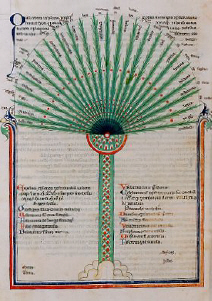13. It has been remarked that the continuous is effectually distinguished from the discrete by their possessing the one a common, the other a separate, limit.
The same principle gives rise to the numerical distinction between odd and even; and it holds good that if there are differentiae found in both contraries, they are either to be abandoned to the objects numbered, or else to be considered as differentiae of the abstract numbers, and not of the numbers manifested in the sensible objects. If the numbers are logically separable from the objects, that is no reason why we should not think of them as sharing the same differentiae.
But how are we to differentiate the continuous, comprising as it does line, surface and solid? The line may be rated as of one dimension, the surface as of two dimensions, the solid as of three, if we are only making a calculation and do not suppose that we are dividing the continuous into its species; for it is an invariable rule that numbers, thus grouped as prior and posterior, cannot be brought into a common genus; there is no common basis in first, second and third dimensions. Yet there is a sense in which they would appear to be equal – namely, as pure measures of Quantity: of higher and lower dimensions, they are not however more or less quantitative.
Numbers have similarly a common property in their being numbers all; and the truth may well be, not that One creates two, and two creates three, but that all have a common source.
Suppose, however, that they are not derived from any source whatever, but merely exist; we at any rate conceive them as being derived, and so may be assumed to regard the smaller as taking priority over the greater: yet, even so, by the mere fact of their being numbers they are reducible to a single type.
What applies to numbers is equally true of magnitudes; though here we have to distinguish between line, surface and solid – the last also referred to as “body” – in the ground that, while all are magnitudes, they differ specifically.
It remains to enquire whether these species are themselves to be divided: the line into straight, circular, spiral; the surface into rectilinear and circular figures; the solid into the various solid figures – sphere and polyhedra: whether these last should be subdivided, as by the geometers, into those contained by triangular and quadrilateral planes: and whether a further division of the latter should be performed.
